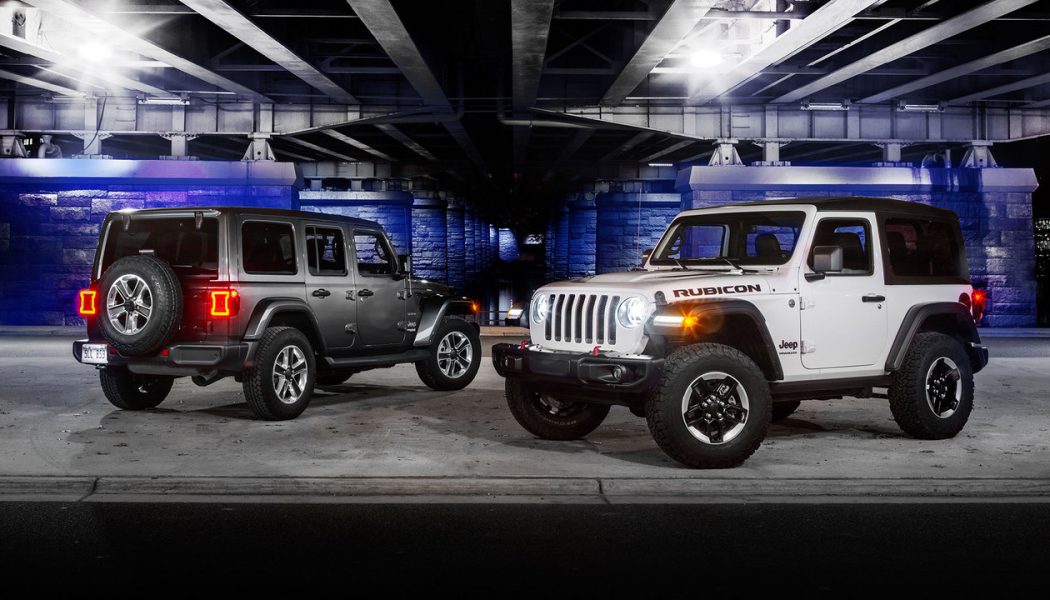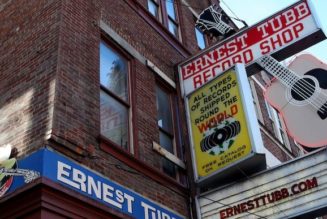Peel away the decades of evolution that have softened the modern SUV—independent suspension, leather-trimmed heated seats, rear-seat entertainment systems, power-adjustable pedals—and what do you have left? Heritage from the golden age of off-roading.
The term “sport utility vehicle” didn’t exist back then. People were just realizing that vehicles designed for emergency crews and farmers also made for exciting off-road adventuring. The vehicles became so popular that sales increased by 700 percent between1961 and 1971, growing 31 percent every year in that period. SUVs soon replaced muscle cars as the hot niche.
These machines were simple and honest. Options were geared toward the working man: snowplows, winches, multiple body styles, a rear seat (if you wanted one). Solid-axle suspensions were the norm, and you could drive these things just about anywhere. Bodies were boxy because straight pieces of metal were easier and less expensive to produce, and you had to take a manual transmission. Interior amenities were nearly nonexistent. Roll-up windows, power steering, and armrests? Sorry, those were options.
In the 1960s and 1970s the Jeep CJ-5, the Toyota Land Cruiser (40 Series), the Land Rover Series II and IIA, the International Harvester Scout, and the Ford Bronco were the major players in the off-road universe. Time spent driving these old-world brutes, on- and off-road at the Land Rover Experience Driving School (just miles from the Pebble Beach Lodge on California’s Monterey Peninsula), revealed the strategic differences in each company’s build philosophies and how Toyota, Land Rover, International Harvester, and Ford planned to mow down Jeep, the original player in this field, and its military-born legend.
Toyota Land Cruiser (FJ40)
In the off-road community, no other Toyota is as popular as the 40 Series Land Cruiser—now a brand icon. The SUV is so beloved that production of the Brazilian model (called the Bandeirante) didn’t end until 2001. The Land Cruiser was the core vehicle in Toyota’s worldwide export strategy. Release the hardy workhorse overseas first to prove itself—then unleash the passenger cars. Toyota’s dominance of today’s automotive landscape proves this strategy worked.
It’s a great-looking truck, too, with attractive flat surfaces and curved windows on the rear corners that offer a surprising amount of visibility. Toyota’s excellent build quality is apparent, inside and out. The cabin is simple and makes you feel settled and ready to drive. The metal dash bears no contours—unless you count the rounded-trapezoid shape of the speedometer and gauge surround. Not sure about the shift pattern? Then glance at the glovebox, also trapezoidal, and a diagram is there to help you get it into low range. Knobs and gauges are labeled and self-explanatory, and everything is within reach. Bucket seats are at the front, and the back is set up with padded benches along the sides—you sit face to face in military-transport fashion.
The 40 launched with a 125-hp 3.9-liter inline-six, loosely patterned after General Motors’ inline-six of the day. That was replaced by a 135-hp 4.2-liter six, which we sampled on this drive. Models initially came with a three-speed manual transmission, but four-speeds later replaced it. Our example, a near-stock 1983 model restored by Land Cruiser-specialist TLC (with mild suspension modifications, slightly oversize tires, and a transmission swap) is incredibly rare—it was the last year the model would exist in the United States. This is essentially the Land Cruiser that Toyota offered for a decade and a half, and its body style and interior amenities are near-identical to those of its 1970s kin. (The model cost $2,995 when it first went on sale in America. )
On paved surfaces, this Land Cruiser is a decent driver at low speed. There’s enough power to keep it out of the way of traffic, and noise is tolerable, even at highway speed. Steering is numb and sloppy but acceptable, and the transmission shifts with ease. But even at 30 mph, the rear end shifts and shimmies, and the vehicle wanders. As power increases, so do the weaknesses. Steering becomes increasingly loose, with a narrow margin between under- and oversteer. It’s like riding on a bar stool.
A stint off-road makes those faults inconsequential, however. Steering is spot on in the dirt and mud. The transmission is geared nicely for four-wheeling. The old Toyota’s 4.84:1 first gear is just about all it takes to crawl over obstacles, especially when shifting into low range and locking the hubs. It’s simple to maneuver the SUV’s short wheelbase along narrow stretches as the trail cuts through dense forest, and the Land Cruiser traverses deep water and ruts with ease. Of the four models here, the Toy0ta is the most Jeep-like in form and in function.
Then: “The Land Cruiser’s name accurately states its design and purpose. After operating the Toyota, it’s easy to conjure up an image of a cloud of dust several miles away in the arid Sahara desert, finally emerging as the Land Cruiser. “—David Carlton, MotorTrend, August 1975
Now: It’s no surprise these 40 Series Land Cruisers are now so valuable. The model combines typical Toyota reliability, incredible off-road prowess, terrific looks, and easy modification. Too bad it’s become almost too expensive to enjoy where it’s most at home—off-road.
Land Rover Series IIA
Then there’s the tank. Land Rover‘s chief engineer owned a Jeep and felt that manufacturing a functional Jeep-like 4×4 could serve as an ideal stopgap—once there were enough sales of the model, Rover could discontinue it to focus on cars (a temporary solution to the company’s post-war woes). Thanks to heavy rationing, steel was hard to come by, so the Land Rover’s body is made from aluminum. It was first revealed to the public in 1948 and became so popular it stuck around for nearly 40 years as the Series I, II, IIA, and III. All generations of Land Rover were available as short- and long-wheelbase models.
This restored 1966 Series IIA, part of Land Rover’s own collection, took some time to get used to. But once adapting to the transmission (its non-synchronized first and second gears require double-clutching, and first is where third is today: straight up) and getting to know the controls, the Series IIA is a charmer. The headlight controls are on a collar that surrounds the ignition. There’s a push-button start. Low-range and four-wheel-drive controls are operated with floor-mounted red- and yellow-knobbed levers.
The cabin doesn’t have a dashboard, per se, but narrow strips of flat metal that ducting and wires run behind. Windshield wipers are operated individually by undoing a release and turning a dial on each one. Windows slide open and close, and, even though heat and A/C are available, climate control is essentially nonexistent; it’s hot in the summer and cold in the winter.
The Land Rover’s curb weight is nearly 800 pounds less than the Toyota’s, though its 70-hp engine gives it a distinct disadvantage on the highway. It can manage freeway speeds but don’t bother conversing with someone else in the cabin if you’re going faster than 50 mph.
It’s just not built for the highway; this is a tool designed for farmers and field workers, which makes it unstoppable on a trail, chugging along with slow, deliberate confidence. It won’t be the first to the finish line, but it’ll get there. Furthermore, the spare is mounted on the hood, making visibility acceptable, but storing it elsewhere would make a vast improvement. The one wing mirror, which is small, round, and impossible to adjust once in motion, is difficult to use and not so handy. Nevertheless, the Land Rover’s age brings it a level of expertise on any and every type of terrain.
Then: “Driving impressions were slightly disappointing on city streets. Acceleration is often sluggish. Yet, in the backcountry, the Land Rover performs with the best of them. It has a gear to match every hill. “—Carl Isica, MotorTrend, March 1964
Now: The Land Rover Series IIA is a hardy, robust machine that feels right at home on rough dirt roads through the woods. It’s a slow, deliberate beast that’s immensely likable—and it’ll get you wherever you need to go.
International Harvester Scout
By the time International Harvester introduced the Scout 80 in 1961, Jeeps, Land Rovers, and Toyotas had been on the road for more than 15 years, and off-roading was becoming a hot pastime. International’s competitors focused their advertising on the hard-working, go-anywhere personas of their vehicles, while the Scout was marketed entirely for recreation, though International claimed it would do well on- and off-road. The Scout 80 featured a 100-inch wheelbase and 3,000-pound curb weight; the sole engine at launch was an 86-hp 2.5-liter four-pot derived by splitting International’s 5.0-liter V-8 in half. Despite the underpowered nature of the Scout, it was an overwhelming success for the company, which has its roots in farm-equipment manufacturing. In 1966, the Scout (now designated the 800) was given a larger four-cylinder engine and a 155-hp V-8 option.
William Allfrey’s father-in-law worked for International from 1952 to 1982, helped set up the West Coast Scout dealership infrastructure, and served as product manager of the Scout program. It’s no surprise a fondness for Scouts runs in his family. Allfrey’s 1970 Scout 800A is a daily driver with the removable Traveltop and optional V-8 engine. It also features several of the options available that year: a chrome front bumper, black vinyl front bucket seats, and dual 10-gallon fuel tanks. The doors are padded, wires are hidden from view, and the layout looks cleaner and better organized than those of the Land Rover and Toyota. But it’s a far cry from luxury. Climate control, for example, is limited to “heat” or “defrost. “
Highway rides also require careful planning. With a 38-foot turning radius, U-turns need a wide road; K-turns are much more likely. The V-8’s power works well with this 3,600-pound truck, but the transmission slips on occasion. A brief time behind the wheel lets you adapt to the predictably sloppy steering. This Scout doesn’t have power brakes; it’s best to brake much earlier than you’d think. But with 180 horses, comfortable, well-padded bucket seats, and plenty of space in the cabin, the highway ride is decent enough.
The Scout fulfills its promise of asphalt and dirt capability, but it also defines the compromises that hinder many SUVs. Its long, square hood makes it tougher to find the right line on the trail, but, despite its street tires and a transmission geared for highway duty, the Scout does well enough traversing mud and ruts. Either way, this is a good all-around truck. The larger Scout II replaced it in 1971.
Then: “The International Harvester Scout’s almost in a class by itself. It’s clean and uncluttered, so its exterior sneaks through the tall timber with astonishing ease”—Carl Isica, MotorTrend, March 1964
Now: It may be big, square, and slow with the four-cylinder, but the International Scout is undeniably cool. Its on-road temperament takes getting used to, especially when it comes to braking, but opting for the V-8 makes it a truck you could live with.
Ford Bronco
Introduced for 1965, the Bronco was the last to the party in this size category and had some catching up to do before even going on sale. But catch up it did. The Bronco received the most modern chassis, suspension, and cabin, and, by the end of its run in 1977, it boasted the likes of standard front disc brakes and two-speed windshield wipers. It also offered options such as a power driver-side mirror, power steering, and a cigarette lighter.
Brian Altizer had the good fortune of buying a bone-stock 1973 Bronco from the original owner: a grandmother who didn’t drive it much (but more often than just going to church on Sundays). Altizer’s Ford is equipped with the street-friendly 4.9-liter V-8, a pleasant step up from the base 89-hp inline-six. The eight’s 205 horses and 300 lb-ft of torque—the best of the group—makes for easy-going street driving. The turning radius is excellent—nearly eight feet less than the Scout’s. The coil-spring suspension and V-8 power put this as the best of the four for long drives. Braking is less than stellar; planning ahead and leaving extra space are essential.
While the others have plain vinyl or drab cloth seats, the Bronco uses stylish cloth for the soft seats, with tweed inserts. Its dash is simple, and the skinny steering wheel is large in diameter. The inside is warm and welcoming, as opposed to the more truck-like interiors of the day. It reflects the transition these vehicles were in the process of making—from work trucks to off-roaders to SUVs.
The Bronco also looks more like a wagon than the rest; its four-wheel-drive prowess is strong. This 1973 Bronco had skinny, aging street tires on 15-inch wheels, but its 40-degree approach angle and excellent ground clearance got it through the ruts and water crossings with ease. Change the wheels and tires to a larger size and all-terrain tread, and this Bronco could easily take on Jeeps through tough trails. And many Bronco owners do just that, which is why these SUVs are difficult to find in stock form.
Then: “The Ford Bronco can be a sturdy workhorse, but it’s still a relatively comfortable vehicle to drive and ride in, even for long periods. Not too many off-road four-wheel-drive vehicles can claim this distinction. “—MotorTrend, October 1965
Now: The Ford Bronco shows the continuing evolution from off-roader to modern-day SUV. With a good combination of four-wheel-drive capability and plenty of comfort for the long haul, it’s an excellent compromise.
CONCLUSION
The Land Cruiser, Series IIA, Scout, and Bronco are all likable, but for different reasons. Each has disadvantages over modern SUVs: sloppy steering, bare cabins, and a relative lack of street performance. But what these old trucks lack in both dash and cush, they make up for in character. Which is the best? Depends on what you’re looking for. For pure off-roading, consider the Land Rover. The Toyota is the most like a Jeep of the bunch. The Scout is a decent mix of on- and off-road capability, while the Bronco is the most up to date, with real power and a pleasant highway ride. No SUV from the 1990s or 2000s will draw a crowd the way these four continue to, and none can match their purity and charm.
Where’s the Jeep?
It was the first in its class, essentially created the niche, and made off-roading a popular hobby in America, and its absence from this story can’t be ignored. Finding a stock CJ in good original condition proved impossible. The CJ line, which includes the CJ-2A, 3B, 5, 6, 7, and 8, is so popular for off-road use it inspired a giant aftermarket industry, one that offers much for the would-be Jeeper. It would’ve been unfair to compare a Jeep with lifted suspension, huge wheels and tires, and aftermarket lockers to these stock vehicles. Even the Toyota’s modifications are minor compared with the rock-crawling CJs on the road—and the trail—today.
Of the CJ line, the CJ-5 would’ve been the best to include here. It was the one that truly made Jeep the popular 4×4 it is to this day. It was on the market in the U.S. from 1955 to 1983, and during that time, more than 600,000 were built. Nearly 380,000 of the also-popular longer-wheelbase CJ-7 were built from 1976 to 1986. The CJ may not have been in the story, but without it, this group of off-road anvils wouldn’t exist.
1983 Toyota Land Cruiser FJ40C
SPECIFICATIONS
Engine: 258-cu-in/4228cc OHV I-6, 1x2bbl Toyota carburetor
Power and torque: (SAE net) 135 hp @ 3600 rpm, 210 lb-ft @ 1800 rpm
Drivetrain: 4-speed manual, 4WD
Brakes, front: discs; rear: drums
Suspension, front: live axle, leaf springs; rear: live axle, leaf springs
Dimensions, L: 152.4 inches, W: 65.6 inches, H: 76.8 inches
Weight: 3,814 pounds
Performance, 0-60 mph: 14.0 sec, quarter mile: 20.3 sec @ 66.0 mph, 60-0 mph: 156 ft (MotorTrend, August 1975)
Price when new: $10,348
1966 Land Rover Series IIA SWB
SPECIFICATIONS
Engine: 140-cu-in/2286cc OHV I-4, 1x1bbl Solex carburetor
Power and torque: (SAE gross) 70 hp @ 4250 rpm, 124 lb-ft @ 2500 rpm
Drivetrain: 4-speed manual, 4WD
Brakes, front: drums; rear: drums
Suspension, front: solid axle, leaf springs; rear: solid axle, leaf springs
Dimensions, L: 142.5 inches, W: 66.0 inches, H: 77.9 inches
Weight: 3,010 pounds
Performance, 0-60 mph: 36.1 sec, quarter mile: 24.0 sec @ NA mph, 30-0 mph: 33.4 ft (Autocar, November 1965)
Price when new: $3,464
1970 International Harvester Scout 800A
SPECIFICATIONS
Engine: 304-cu-in/4982cc OHV V-8, 1x2bbl Holley carburetor
Power and torque: (SAE gross) 180 hp @ 4400 rpm, 262 lb-ft @ 2800 rpm
Drivetrain: 3-speed automatic, 4WD
Brakes, front: drums; rear: drums
Suspension, front: solid axle, leaf springs; rear: solid axle, leaf springs
Dimensions, L: 154.0 inches, W: 68.6 inches, H: 67.0 inches
Weight: 3,615 pounds
Performance, 0-60 mph: 15.3 sec, quarter mile: 19.6 sec @ 68.0 mph, 60-0 mph: 158.0 ft (Scout II w/ 304 V-8, PV4, February 1975)
Price when new: $3,464
1973 Ford Bronco
SPECIFICATIONS
Engine: 302 cu-in/4942cc OHV V-8, 1×2-bbl Motorcraft carburetor
Power and torque: (SAE net) 205 hp @ 4600 rpm, 300 lb-ft @ 2600 rpm
Drivetrain: 3-speed automatic, 4WD
Brakes, front: drums; rear: drums
Suspension, front: live axle, coil springs; rear: live axle, leaf springs
Dimensions, L: 152.1 inches, W: 68.8 inches, H: 71.1 inches
Weight: 3,750 pounds
Performance, 0-60 mph: 14.9 sec, quarter mile: 19.5 sec @ 68.0 mph, 60-0 mph: 238 ft (PV4, June 1973)
Price when new: $3,996 (including $360 for V-8 and automatic)










